It turns milk chocolatey yet Ofcom is happy for it to be advertised on children’s TV. Alex Beckett weighs up what Weetabix Chocolate means for the market
You can’t move for holy grails these days. Every- thing from microwaveable tuna pouches to greener batteries have been billed as the next fmcg miracle product.
But the latest claimant to the title has come up with something demanding not only the attention of consumers, but politicians, doctors, dieticians, health groups, TV executives, marketing executives, the mainstream media, the FSA and TV regulator Ofcom.
The product in question is Weetabix Chocolate – a new cocoa powder-infused version of the popular breakfast cereal, peppered with chocolate chips – which launches on Monday (The Grocer, 3 July).
There’s nothing unusual in a choc-flavoured cereal, of course. In fact, since Ofcom moved to ban high fat, salt and sugar (HFSS) products from advertising on children’s TV in 2007 – using the FSA’s notorious nutrient profiling model – sales of super-sugary, chocolate-flavour cereals such as Coco Pops have, ironically, risen.
But Weetabix Chocolate is the first chocolate breakfast cereal to pass the Ofcom test – meaning Weetabix is free to advertise it on kids’ TV programming. And, with the high-fibre, wholegrain goodness of regular Weetabix but half the sugar of the average chocolate-flavoured breakfast cereal, mums will be just as receptive.
So how did Weetabix do it? Is it the game-changing product some industry watchers believe it could be? And how are rivals responding?
Weetabix Chocolate scored a rating of –2, which means it easily passed the Ofcom test (foods fail, under the NPM scoring system, if they rack up four or more points). But Weetabix spent years developing the formula, says consultant dietician Sian Porter.
With just 15.9g of sugar (per 100g) – compared with Coco Pops’ 35g, for example – “it was very challenging to deliver a product that has a great chocolate taste, without loading up on sugar.
“But we will never launch anything that compromises our health credentials,” she adds.
And Weetabix marketing director Sally Abbot insists it was consumer demand, not a desire to conform to Ofcom rules, that prompted the development of Weetabix Chocolate.
“The fundamental raison d’etre of Chocolate Weetabix was to find a solution to what mums and kids want,” she says. “We are not working to the Ofcom ruling – we are working to the consumer’s need.”
Rivals
In stark contrast, rival Kellogg’s shamelessly ignored the health market when it targeted young adults with the launch of its indulgent, chocolate-heavy Krave in January. Yet Kellogg’s points out that it hasn’t rested on its laurels when it comes to reformulating some of its chocolate cereals.
“We have been renovating our products and improving our nutritional values for more than 10 years, including reducing the salt in Coco Pops and Rice Krispies by 30% in January this year,” says a Kellogg’s spokesman.
But kids’ favourite Coco Pops, which scored 14 on the NPM, is still a long way from sharing screen time with Horrid Henry and SpongeBob Squarepants.
And it is in the advertising arena where Weetabix Chocolate – which will be supported by a £3m national TV push from September – can really pack a punch, claim marketing and brand analysts.
The first advantage the 80-year-old Weetabix brand has is its healthy heritage, says Tom Ellis, strategy and research director at brand agency 1HQ, because it gives the new variant instant credibility with mums. “Weetabix is in a strong position to engage mums rationally as well as emotionally, because the brand sets out from a fundamentally healthy point,” he says. “Other cereal launches that have strong associations with sugar and sweetness would find it harder to instantly engage and be credible on this level.
“Competitor kids’ brands have had to overplay health messages in an effort to appease mums and often seemed less appealing to kids as a result. Weetabix has been trying to break the tension between healthy and tasty – and it looks like it might have succeeded.”
The absence of a brand character on pack – such as Frosties’ Tony the Tiger – could also prove to be a savvy move, Ellis adds. “Even though the cereal is allowed to advertise directly to children, it doesn’t play to classic kids’ cereals category cues,” he feels.
Ellis also believes the new product gives Weetabix a chance to encourage a loyal following across the brand. “This product provides the perfect stepping stone for kids to grow into loyal main brand consumers, without the brand break that happens with the more kid-focused cereals such as Coco Pops and Frosties,” he says.
Regulation
As well as being a triumph for Weetabix, the choc-flavoured cereal also represents a ringing endorsement for the government and the FSA, says Ian Barber, director of communications at the Advertising Association. “This is a great example of why proportionate, pragmatic regulation works,” he says.
“While there are frequent, misplaced calls for draconian bans, Ofcom’s rules reflect the reality: a lack of evidence linking food advertising with any significant impact on children’s diets,” Barber says. “Maintaining the freedom to advertise responsibly means that companies are encouraged to continue improving choice and innovating in this way.”
Undoubtedly, Weetabix Chocolate has the potential to give Kellogg’s and Nestlé cause for concern. But a holy grail? Weetabix is at least halfway there. The real potential of Weetabix Chocolate will only be seen when it hits TV screens in two months. Execs at CITV, Nickelodeon et al must be licking their lips.
You can’t move for holy grails these days. Every- thing from microwaveable tuna pouches to greener batteries have been billed as the next fmcg miracle product.
But the latest claimant to the title has come up with something demanding not only the attention of consumers, but politicians, doctors, dieticians, health groups, TV executives, marketing executives, the mainstream media, the FSA and TV regulator Ofcom.
The product in question is Weetabix Chocolate – a new cocoa powder-infused version of the popular breakfast cereal, peppered with chocolate chips – which launches on Monday (The Grocer, 3 July).
There’s nothing unusual in a choc-flavoured cereal, of course. In fact, since Ofcom moved to ban high fat, salt and sugar (HFSS) products from advertising on children’s TV in 2007 – using the FSA’s notorious nutrient profiling model – sales of super-sugary, chocolate-flavour cereals such as Coco Pops have, ironically, risen.
But Weetabix Chocolate is the first chocolate breakfast cereal to pass the Ofcom test – meaning Weetabix is free to advertise it on kids’ TV programming. And, with the high-fibre, wholegrain goodness of regular Weetabix but half the sugar of the average chocolate-flavoured breakfast cereal, mums will be just as receptive.
So how did Weetabix do it? Is it the game-changing product some industry watchers believe it could be? And how are rivals responding?
Weetabix Chocolate scored a rating of –2, which means it easily passed the Ofcom test (foods fail, under the NPM scoring system, if they rack up four or more points). But Weetabix spent years developing the formula, says consultant dietician Sian Porter.
With just 15.9g of sugar (per 100g) – compared with Coco Pops’ 35g, for example – “it was very challenging to deliver a product that has a great chocolate taste, without loading up on sugar.
“But we will never launch anything that compromises our health credentials,” she adds.
And Weetabix marketing director Sally Abbot insists it was consumer demand, not a desire to conform to Ofcom rules, that prompted the development of Weetabix Chocolate.
“The fundamental raison d’etre of Chocolate Weetabix was to find a solution to what mums and kids want,” she says. “We are not working to the Ofcom ruling – we are working to the consumer’s need.”
Rivals
In stark contrast, rival Kellogg’s shamelessly ignored the health market when it targeted young adults with the launch of its indulgent, chocolate-heavy Krave in January. Yet Kellogg’s points out that it hasn’t rested on its laurels when it comes to reformulating some of its chocolate cereals.
“We have been renovating our products and improving our nutritional values for more than 10 years, including reducing the salt in Coco Pops and Rice Krispies by 30% in January this year,” says a Kellogg’s spokesman.
But kids’ favourite Coco Pops, which scored 14 on the NPM, is still a long way from sharing screen time with Horrid Henry and SpongeBob Squarepants.
And it is in the advertising arena where Weetabix Chocolate – which will be supported by a £3m national TV push from September – can really pack a punch, claim marketing and brand analysts.
The first advantage the 80-year-old Weetabix brand has is its healthy heritage, says Tom Ellis, strategy and research director at brand agency 1HQ, because it gives the new variant instant credibility with mums. “Weetabix is in a strong position to engage mums rationally as well as emotionally, because the brand sets out from a fundamentally healthy point,” he says. “Other cereal launches that have strong associations with sugar and sweetness would find it harder to instantly engage and be credible on this level.
“Competitor kids’ brands have had to overplay health messages in an effort to appease mums and often seemed less appealing to kids as a result. Weetabix has been trying to break the tension between healthy and tasty – and it looks like it might have succeeded.”
The absence of a brand character on pack – such as Frosties’ Tony the Tiger – could also prove to be a savvy move, Ellis adds. “Even though the cereal is allowed to advertise directly to children, it doesn’t play to classic kids’ cereals category cues,” he feels.
Ellis also believes the new product gives Weetabix a chance to encourage a loyal following across the brand. “This product provides the perfect stepping stone for kids to grow into loyal main brand consumers, without the brand break that happens with the more kid-focused cereals such as Coco Pops and Frosties,” he says.
Regulation
As well as being a triumph for Weetabix, the choc-flavoured cereal also represents a ringing endorsement for the government and the FSA, says Ian Barber, director of communications at the Advertising Association. “This is a great example of why proportionate, pragmatic regulation works,” he says.
“While there are frequent, misplaced calls for draconian bans, Ofcom’s rules reflect the reality: a lack of evidence linking food advertising with any significant impact on children’s diets,” Barber says. “Maintaining the freedom to advertise responsibly means that companies are encouraged to continue improving choice and innovating in this way.”
Undoubtedly, Weetabix Chocolate has the potential to give Kellogg’s and Nestlé cause for concern. But a holy grail? Weetabix is at least halfway there. The real potential of Weetabix Chocolate will only be seen when it hits TV screens in two months. Execs at CITV, Nickelodeon et al must be licking their lips.



![XOXO-Product-Shot[ALL FLAVOUR]-Sky-1920x1080](https://dmrqkbkq8el9i.cloudfront.net/Pictures/274x183/4/9/2/355492_xoxoproductshotallflavoursky1920x1080_806584_crop.jpg)





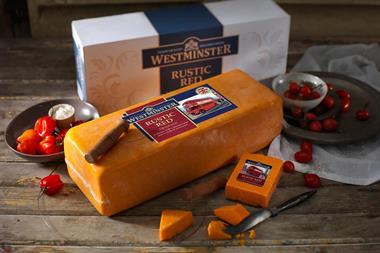
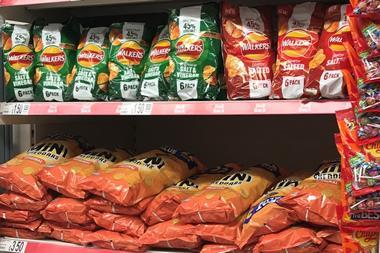


![XOXO-Product-Shot[ALL FLAVOUR]-Sky-1920x1080](https://dmrqkbkq8el9i.cloudfront.net/Pictures/380x253/4/9/2/355492_xoxoproductshotallflavoursky1920x1080_806584_crop.jpg)
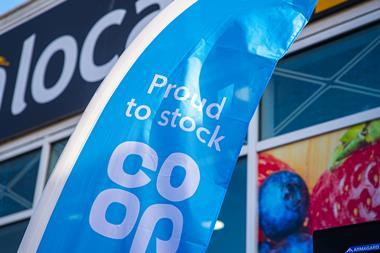
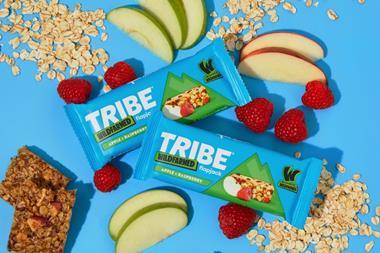
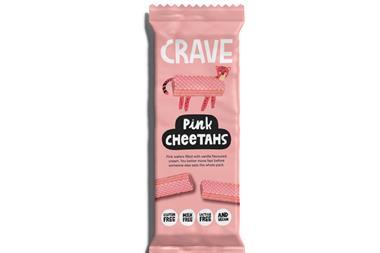

No comments yet